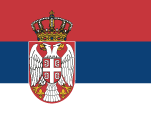Study program / study programs: E-BUSINESS, INFORMATION TECHNOLOGY
Type and level of studies: Undergraduate vocational studies
Subject: COMPUTER NETWORKS
Status: Elective
ECTS credits: 8
Course objective
The objective of the Computer Networks course is the acquisition of knowledge necessary for the administration of minimum peer-to-peer networks (TCP/IP parameter settings, sharing mapping, work with basic network equipment) in Windows and Linux environments. The students are introduced to the reasons of networking, network types and topologies and the besic media for network realization. Detailed analysis of the OSI model and its implementation in Windows and Linux environments. The fundamentals of network administration in today’s learning operating systems: Windows and Linux.
Course outcome
The students will be introduced to client-server and peer-to-peer networking, the factors that need to be taken into consideration when choosing a networking approach, the types and topology of computer networks, the effects of computer network topologies, the hardware used for network connections, as well as signal transfer techniques. The students will learn about TP and coaxial cable, the methods of data access, and Ethernet architecture. They will be introduced to Token Ring, the hierarchical organization of protocols, IP address structure, determining the number of bits of an IP address that refers to the network address based on subnet mask, the determining of broadcast addresses, classless addressing, subnetworking and supernetworking, encapsulation and decapsulation, the structure of UDP and TCP segments, the structure of packages, the structure of Ethernet frameworks, DNS, the purpose and syntax of network commands (ping, tracert, pathping, netstat, ipconfig), the difference between hub, the difference between hub, switch and router, virtual local networks, types of local networks, wireless network protection, types of network barriers, network performance monitoring, locating and fixing network problems. During the implementation of the program, the student will have an opportunity to learn how to work in the latest version of the Windows network operating system. The students can complement their knowledge of the subject through an online Linux course included in ITAcademy’s educational programs, which the students will receive via the online learning platform.
Course content
Theoretical classes:
- Fundamentals of networking
- Types of computer networks
- Computer network topology
- Network elements
- Computer network cabling
- OSI model
- OSI model through operating system examples
- Windows and Linux, Protocols
- IP addressing
- The concept of subnet mask
- Network equipment
- Network administration
- Web servers
- Client/server architecture in network environment
- Network realization – example
- Wireless networks
- Network protection problems
Practical classes:
- Solving subnetworking tasks and problems
- Cabling
- TP cables, crimping
- Windows network operating system: installing WinServer on virtual network and basic settings
- Working with IP addresses: masking, classes, MAC-IP-domain name connection, routing
- Server configuration
- Active directory installation, DNS
- Creating users, groups and policies, joining a computer to a domain
